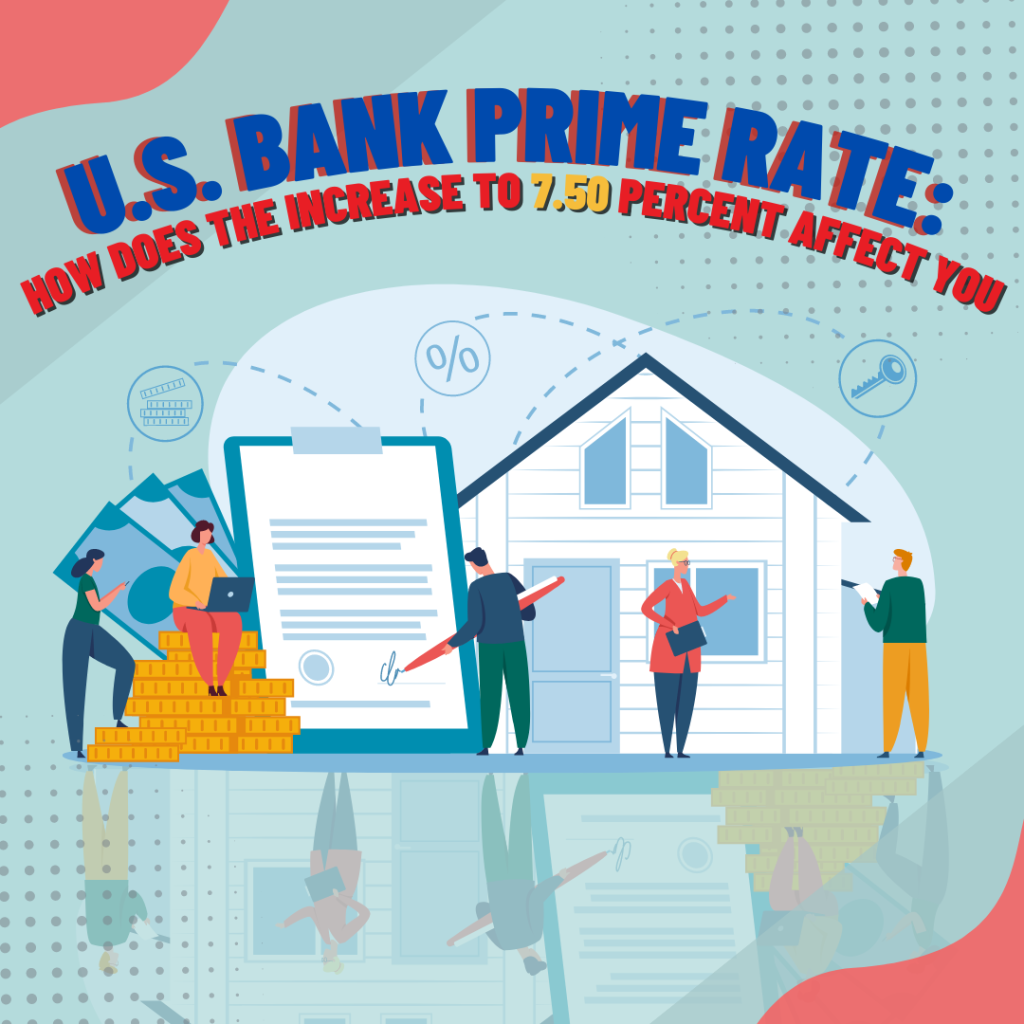Author: Britanny Holand
The story started when the U.S. Bancorp (NYSE: USB) recently announced that its prime lending rate would increase to 7.50 percent from 7.00 percent. This significant increase, which had become effective on the 15th day of December 22, raises effects on the foremost aspects of society– the economy and the people. Here’s why.
You might frequently come across this term when reading about loans and mortgages or in the financial news. The prime rate determines the interest rate that U.S. financial institutions can charge their most valuable clients. These customers qualify for this best rate due to their great credit and the low risk their loans provide to their banking institutions.
How Does the Prime Rate Affect You and the Economy
Here comes the most interesting part of the story. Considering the current 7.50 percent of the prime rate, there are two different ways that it can affect society.
First, the prime rate impacts the interest rates on almost all loans, including credit cards and mortgages. Large lenders and financial institutions base their interest rates on the prime rate, typically setting their current rates above prime to account for their higher default risk. The interest rates on your loans and credit cards with adjustable rates will increase if the prime rate increases.
Second, the prime rate impacts the liquidity of the financial market. When the rate is low, liquidity grows. Because loans are more affordable and easier to qualify for, funds become more easily accessible. As a result, the economy expands as firms grow. In contrast, poor liquidity and difficult access to loans occur when the prime rate is high, which slows down the economy.
What Makes the Prime Rate Increase
The Federal Reserve decides the federal funds target rate. To meet Fed reserve requirements, it influences banks’ interest rates when they lend money to one another for a day.
According to a chief economist, Jeanette Garretty, “There is a rule of thumb that the prime rate is “fed funds plus 3.” It means that one bank will typically take the lead when the fed funds rate changes and announce a change in that bank’s prime rate on the same day.
Only when the federal funds rate changes do the prime rate also change. “This is unlike other rates that vary daily/weekly according to the short-term financial market, supply, and demand situations,” explains Garretty.
A bank will begin raising rates for its other lending products in the same manner once it changes its prime rate based on the new federal funds rate. Additionally, other rates decrease along with the prime and federal funds rates, making borrowing less expensive.
Conclusion
While the prime rate affects economic growth and the interest rate lenders set, it is still best to know how it works. It could be the best life lesson people can get from the economic stories and concerns brought by the increase of the US prime rate. The prime rate is inversely proportional to the convenience of society. Thus, people should really see that every financial value they possess counts.

